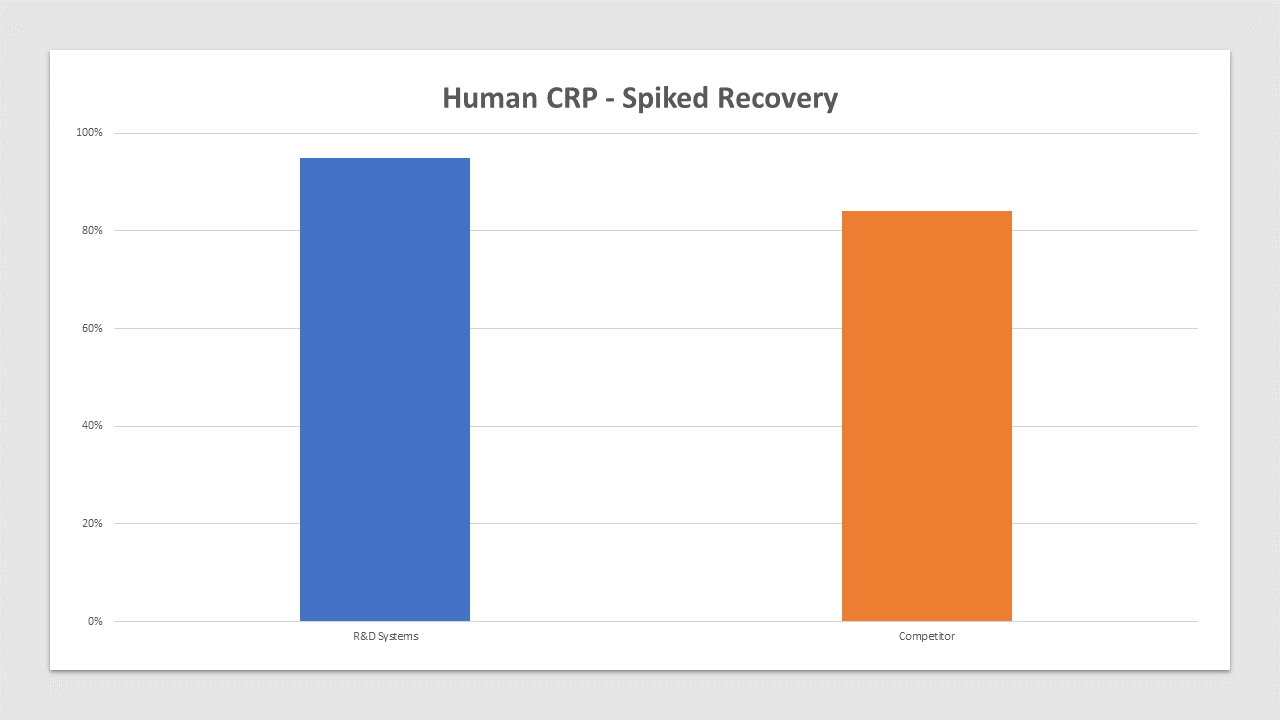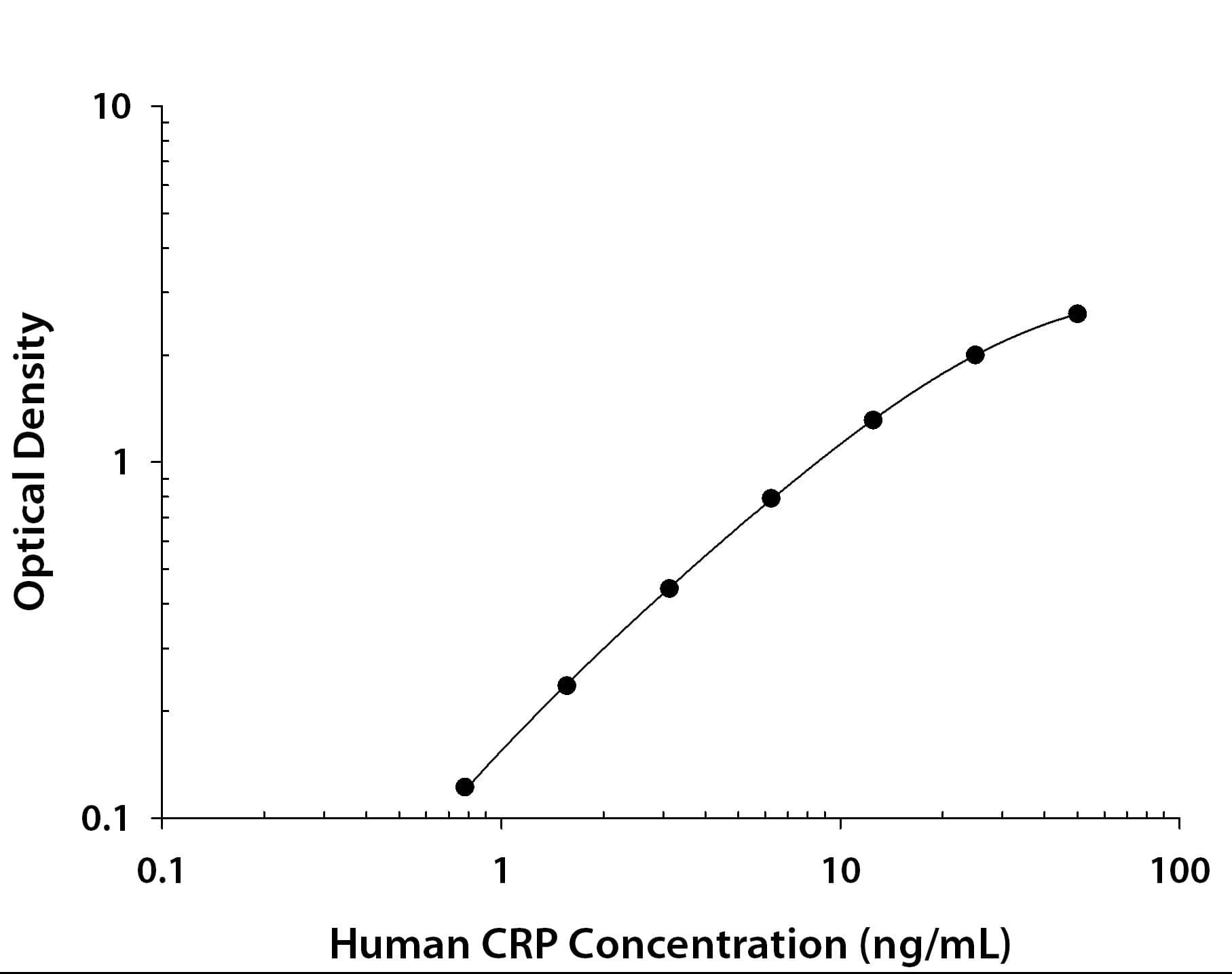Human C-Reactive Protein/CRP QuicKit ELISA
R&D Systems, part of Bio-Techne | Catalog # QK1707

Key Product Details
Assay Length
Sample Type & Volume Required Per Well
Sensitivity
Assay Range
Product Summary for Human C-Reactive Protein/CRP QuicKit ELISA
Product Specifications
Measurement
Detection Method
Conjugate
Reactivity
Specificity
Cross-reactivity
Interference
Sample Values
| Sample Type | Mean (ng/mL) | Range (ng/mL) | Standard Deviation (ng/mL) |
| Serum (n=10) | 2546 | 176-9946 | 2835 |
| ESTA plasma (n=20) | 2443 | 178-9519 | 2719 |
| Heparin plasma (n=20) | 2401 | 171-9550 | 2627 |
Cell Culture Supernates - Human peripheral blood mononuclear cells (PBMCs) (1 x 106 cells/mL) were cultured in RPMI supplemented with 10% fetal bovine serum, 2 mM L-glutamine, 100 U/mL penicillin, and 100 μg/mL streptomycin sulfate. Cells were left unstimulated or stimulated with 10 μg/mL PHA for 5 days. Aliquots of the culture supernates were removed and assayed for levels of human CRP. No detectable levels were observed.
Precision
Intra-Assay Precision (Precision within an assay) Two samples of known concentration were tested twenty times on one plate to assess intra-assay precision.
Inter-Assay Precision (Precision between assays) Two samples of known concentration were tested in ten separate assays to assess inter-assay precision. Assays were performed by at least three technicians.
Cell Culture Supernates, EDTA Plasma, Heparin Plasma, Serum
| Intra-Assay Precision | Inter-Assay Precision | |||
|---|---|---|---|---|
| Sample | 1 | 2 | 1 | 2 |
| n | 20 | 20 | 10 | 10 |
| Mean (ng/mL) | 3.75 | 26.1 | 4.03 | 24.8 |
| Standard Deviation | 0.146 | 1.08 | 0.195 | 1.31 |
| CV% | 3.9 | 4.1 | 4.8 | 5.3 |
Recovery for Human C-Reactive Protein/CRP QuicKit ELISA
The recovery of human CRP spiked to three levels in samples throughout the range of the assay was evaluated.
| Sample Type | Average % Recovery | Range % |
|---|---|---|
| Cell Culture Media (n=4) | 96 | 92-102 |
Linearity
To assess the linearity of the assay, samples containing and/or spiked with high concentrations of human CRP were diluted with calibrator diluent to produce samples with values within the dynamic range of the assay.

Scientific Data Images for Human C-Reactive Protein/CRP QuicKit ELISA
Human CRP Standard Curve ELISA
Human CRP QuicKit Spiked Recovery Competitor Comparison
CRP is spiked at three known concentrations throughout the range of the assay and run to measure response of the spiked sample matrix. Culture media recovery is 95% compared to 84% for the top competitor. In spike and recovery experiments, natural samples are spiked with the recombinant target analyte of interest to identify interference caused by sample matrices.Preparation and Storage
Shipping
Stability & Storage
Background: C-Reactive Protein/CRP
Additional C-Reactive Protein/CRP Products
Product Documents for Human C-Reactive Protein/CRP QuicKit ELISA
Product Specific Notices for Human C-Reactive Protein/CRP QuicKit ELISA
For research use only

